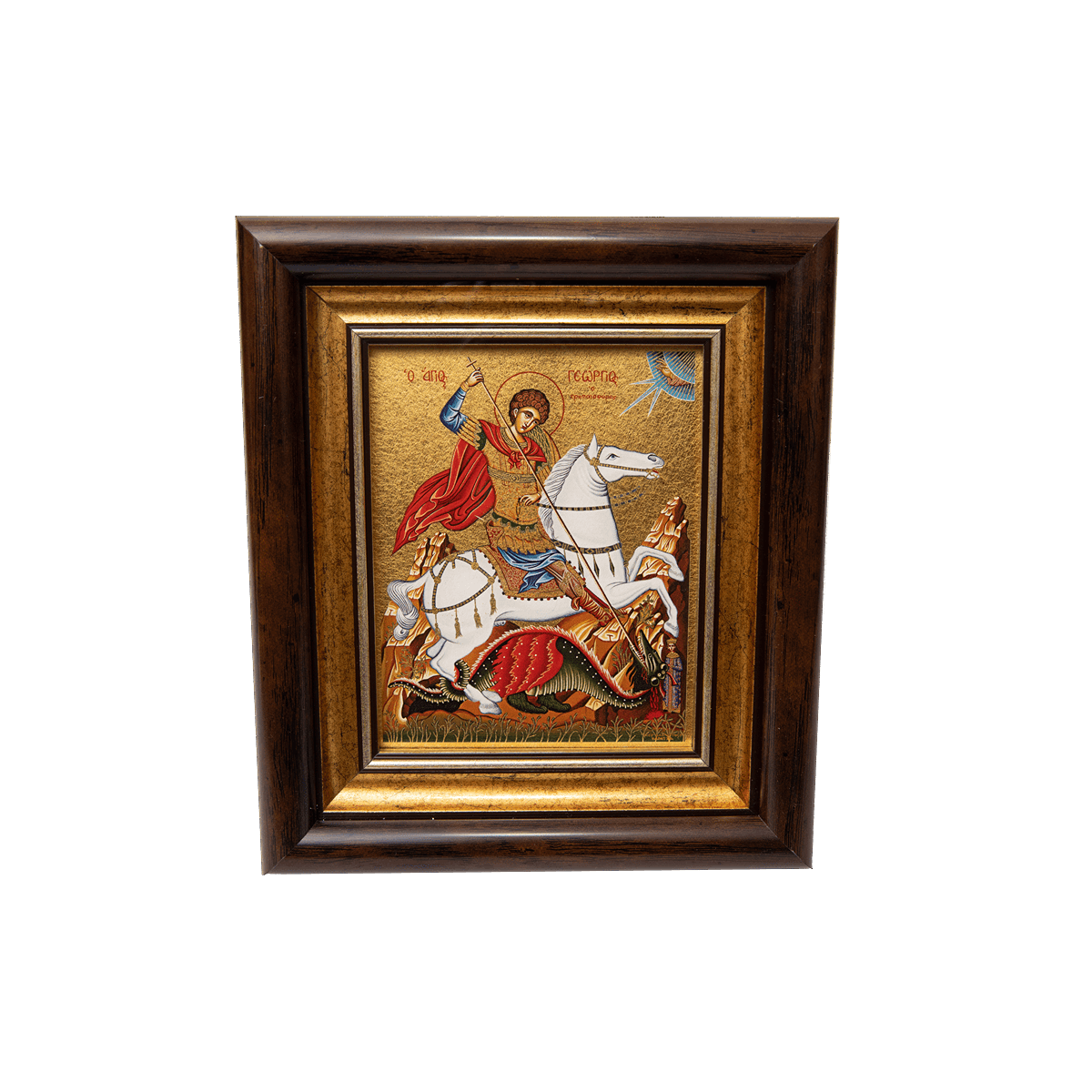Saint George is one of the most revered saints in both Eastern and Western Christianity, best known for the legendary story of his defeat of a dragon. His legacy as a protector of the Christian faith and a symbol of courage is often depicted through art, especially in religious icons. A Saint George painted icon carries deep spiritual and historical significance, serving as a visual testament to his virtuous life, martyrdom, and enduring influence on Christian communities.
The Legend of Saint George
The story of Saint George's battle with the dragon is rooted in Christian tradition, though it also carries symbolic meanings that transcend history. According to legend, Saint George, a Roman soldier, came across a city terrorized by a dragon. The beast demanded human sacrifices, and when the king’s daughter was about to be offered, Saint George intervened, slaying the dragon and saving the princess. This act has come to symbolize the triumph of good over evil, faith over fear, and the protection of the innocent.
In icons, Saint George is often depicted on horseback, spear in hand, driving the weapon into the dragon beneath him. This image of Saint George as a warrior is both literal and metaphorical—he is a warrior of faith, defending Christianity against evil forces. The image has captivated the Christian imagination for centuries, making it a popular subject in religious iconography.
The Tradition of Painted Icons
Icons, particularly in the Eastern Orthodox tradition, are not just religious artworks but are considered windows into the divine. They are crafted with meticulous attention to symbolism, using specific colors, figures, and postures to convey deeper spiritual truths. A painted icon of Saint George is designed to inspire devotion, guide prayer, and offer protection to the faithful. It represents the idea that the saints are always present and ready to intercede on behalf of those who honor them.
The process of creating a Last Supper Painted Icon is itself considered a sacred act. The iconographer (the artist) must prepare spiritually, often through prayer and fasting, before beginning the work. Each stroke of the brush is intentional, guided by centuries-old traditions that dictate how saints should be represented.
Symbolism in Saint George Icons
The imagery in a Saint George icon is filled with rich symbolism. Saint George’s armor signifies his role as a protector of the faith, while his horse represents purity and strength. The dragon, of course, is a symbol of evil, chaos, and paganism, which Saint George vanquishes through the power of Christian virtue.
In some icons, the princess or the city he saves is depicted, symbolizing humanity or the Church being delivered from evil. His expression is typically calm and composed, illustrating that true victory over evil comes not from anger or aggression but from steadfast faith and divine grace.
Colors also play a significant role. Red, which is often used for Saint George's cloak, represents both his martyrdom and the blood of Christ, while gold, used in the background, signifies the divine light of heaven.
The Cultural Significance of Saint George Icons
Saint George icons are revered across many cultures, particularly in Eastern Europe, Russia, Greece, and the Middle East. Churches, monasteries, and homes often display these icons as symbols of protection, faith, and courage. They serve as reminders that even in the face of overwhelming challenges, one can find strength through faith, much like Saint George in his legendary battle.
The popularity of Saint George icons continues to this day, with many modern iconographers still following the traditional techniques used for centuries. These icons are more than just art; they are powerful spiritual tools that connect believers to the divine, reminding them of the virtues that Saint George exemplifies—bravery, loyalty, and the triumph of good over evil.






Comments